Czechoslovak armored vehicles of the interwar period. Part II
After testing the PA-I armored vehicle, the Czechoslovak military issued a long list of claims to Škoda. The military was not satisfied with the layout of the armored vehicle, its characteristics and armament. In this regard, the developer had to do modifications of the project. The number of identified deficiencies was so great that as a result of refinement, a new project of Škoda PA-II Zelva appeared. It used a large number of developments in the previous project, but the changes have undergone a number of important features of the appearance of the car.
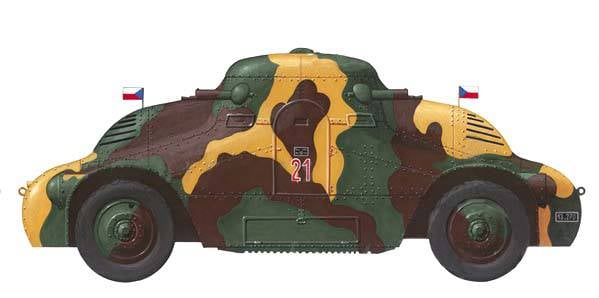
The chassis of the base armored vehicle PA-I was significantly improved. In particular, it received a new Škoda gasoline engine with HP 70 power. Such an update of the project was supposed to simplify the construction of armored vehicles due to the lack of the need to purchase imported engines. Transmission, suspension and wheels remained the same.
Armored car Škoda PA-II was named Zelva ("Turtle"). This “name” of the armored car was associated with the design of the upgraded armored hull. In an effort to improve the performance of body armor and reduce its weight, the authors of the new project completely redesigned the body of the base armored car. As a result, instead of the angular design of flat panels, the PA-II received a characteristic body with many curved parts. The new building reminded the engineers of the turtle shell, which is why an alternative project name appeared.
Despite its different shape, the Škoda PA-II armored vehicle housing was proposed to be assembled from the same sheets as in the case of the PA-I. The roof and bottom had a thickness of 3 mm, the remaining panels - 5,5 mm. Armor panels of such thickness could stop small bullets. weapons, and their specific location further enhanced the level of protection. At the same time, however, the original body of the armored car "Turtle" was rather difficult to manufacture. Before installing rolled armor plates on a frame, they needed to be given a specific shape, which affected the complexity and duration of construction.
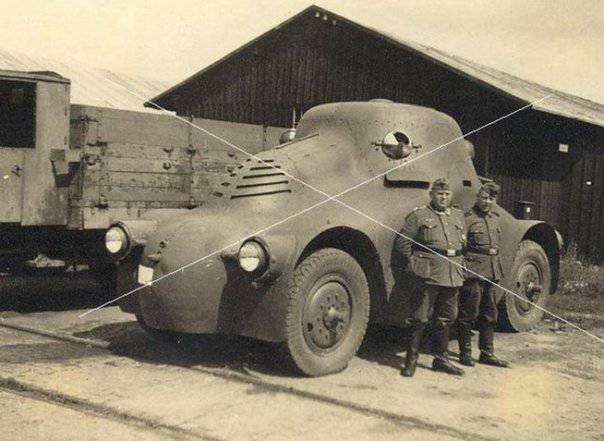
The layout of the internal volumes of the PA-II and PA-I armored cars was almost the same, except for a few features. The Turtle engine was located above the front axle, and its radiator was raised up. The engine and radiator were closed with an armored hood of a characteristic shape. Two drivers were to be located in the front and rear parts of the combat compartment. For convenience, the control stations are located on the longitudinal axis of the machine. Observation of the road could be carried out through hatches in the upper part of the bonnet and the rear casing. In a combat situation, these hatches had to be closed and monitor the situation through the viewing gaps. For landing and leaving the car in the sides were saved two doors.
The armament of the Škoda PA-I armored car caused some complaints from the military. Two machine guns mounted in the same turret were considered insufficiently powerful weapons, and their placement affected combat capabilities. For this reason, the new Škoda PA-II Zelva armored car received four Schwarzloze MG.08 machine guns at once. Machine guns were mounted in ball mounts at the sides, in the front and rear parts of the combat compartment. The total ammunition of machine guns exceeded 6200 cartridges. The placement of weapons made it possible to ensure almost circular shelling of targets, as well as to get rid of the rotating turret.
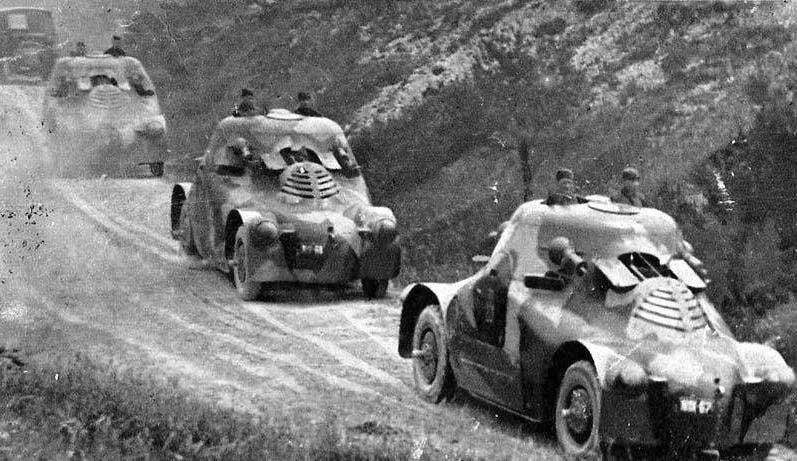
The crew of the PA-II armored car consisted of five people - two drivers and three riflemen. It was assumed that the fourth machine gun, if necessary, can be used by one of the drivers.
The Škoda PA-II Zelva armored car turned out to be quite heavy - its combat weight exceeded 7,3 tons. At the same time, its length reached 6 meters, the width and height were 2,1 and 2,4 m, respectively.
Preservation of the basic elements of the base chassis and the use of the engine power 70 hp allowed to provide a new armored car sufficiently high performance. “Turtle”, refuting its own name, could accelerate on the highway to 70-75 km / h. Cruising range reached 250 kilometers.
The first prototype of the Škoda PA-II Zelva armored car was built and tested in the 1924 year. Checking the new car showed its advantages over the previous model’s armored vehicles, which affected the military’s decision. Already in December the Czechoslovak army received the first serial PA-II armored car 24. In total, the PA-II armored vehicles were built 12. However, two cars quickly lost their armor and became training.
In 1927, Škoda launched the PA-II Delovy armored car for testing. The front of his armored hull had new contours, due to changes in the armament complex. In front of the fighting compartment located gun caliber 75 mm. The firepower of the upgraded armored car increased significantly, but the change in other characteristics affected the fate of the project. The power plant of the cannon armored car remained the same, and the combat mass increased to 9,4 tons. The mobility of the PA-II Delovy armored car was insufficient, which is why the military refused it. Soon the only gun armored car was dismantled.
The Škoda PA-II Zelva armored car had quite high performance and therefore quickly interested some third countries. Already in 1924, Škoda began to receive offers to buy new-model equipment. However, the workload of production allowed to sign only one contract. In accordance with this document, in a few years, three "Turtles" were handed over to the Austrian police. In Austria, one of the armored cars received a small commander's dome with viewing devices.
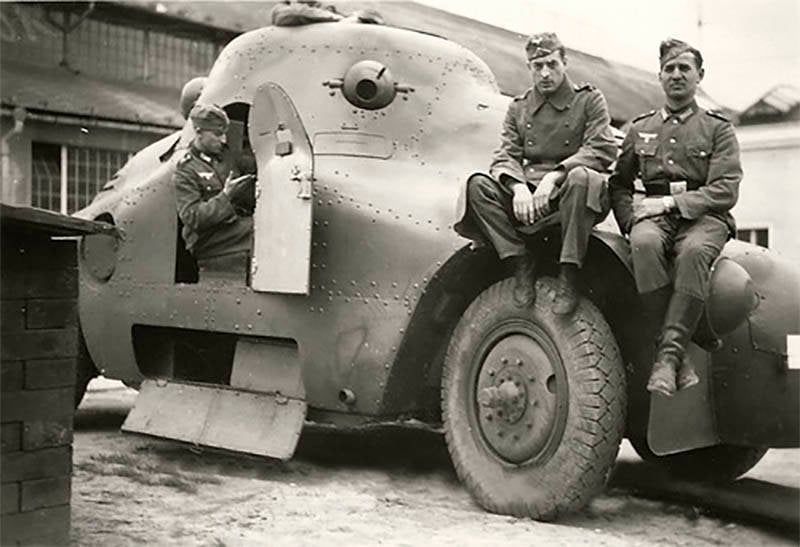
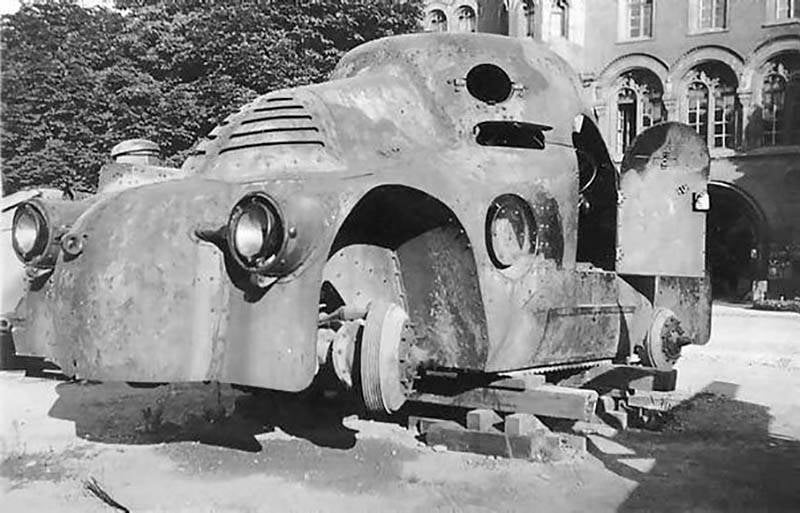
Czechoslovak Škoda PA-II armored cars were used until the mid-thirties, after which they began to be sent to the reserve. Austrian cars, in turn, were actively exploited until the 1938 year. A certain amount of PA-II armored cars got to German troops a bit later. It is known that several former Czechoslovak machines received radio stations and loop antennas. Germany used captured armored cars for police purposes. After the end of the Second World War, three armored vehicles were returned to the Austrian police. The fate of Czechoslovak armored vehicles Škoda PA-II Zelva remains unknown.
Škoda PA-III and PA-IV
Further development of the line of armored vehicles, launched by the PA-I armored car, was the PA-III. The development of this armored vehicle began in 1926-27. The aim of the project was to improve the PA-II armored car with the preservation and improvement of performance. It was assumed that the updated project will simplify the construction process and thereby contribute to reducing the cost of production machines.
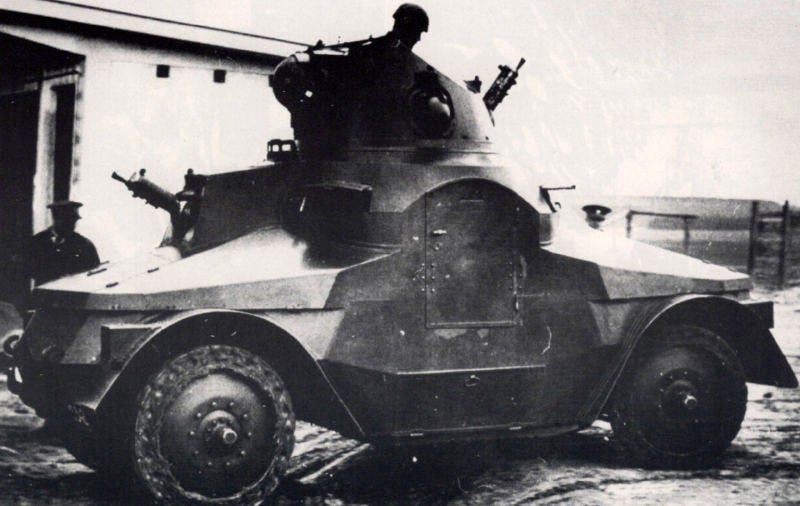
The chassis of the new Škoda PA-III armored vehicle was made on the basis of the corresponding units of the previous vehicle. In this case, the chassis has received a less powerful engine. The authors of the new project decided that the use of a petrol engine with a power of 60 HP. allow you to maintain acceptable performance. The design of the chassis remained the same.
The PA-III armored hull was designed using the experience gained from the two previous projects. Like the body of the PA-I armored car, it consisted of a large number of flat panels connected at different angles. Shells 3 mm (roof and bottom) and 5,5 mm (sides, forehead and stern) were used in the hull construction. The layout of the internal volumes was slightly modified. In front of the car, the engine and radiator were still located, but they were completely covered by the frontal parts of the case. In the middle and aft parts of the body there was a manned volume with crew jobs.
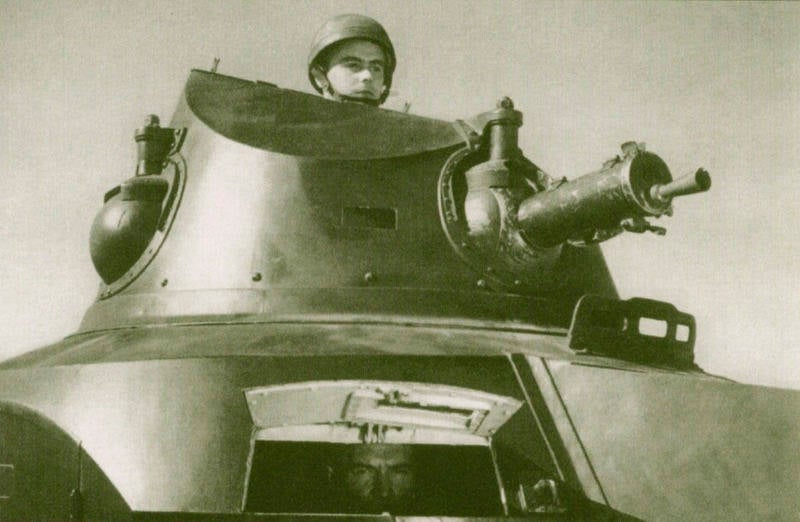
As part of the crew of five people were still present two drivers, accommodated in habitable volume. The front control post was shifted to the starboard side, rear - to the left. Drivers had to use inspection hatches. The placement of the hatches, as before, had a negative impact on the review from the driver’s jobs.
On the roof of the fighting compartment of the armored car was placed a conical rotary tower with a wall thickness of 5,5 mm. In the front sheet of the tower there was a ball mount for the 7,92-mm machine gun ZB vz.26. Tower shooter could attack targets in any direction. To increase firepower in the front and rear sectors, the PA-III armored car received two more machine guns of the same type. One of them was installed in the middle of the front sheet of the crew compartment, the other - in the stern. On the back wall of the tower there was a searchlight of interesting design. The searchlight had an armored body that protected it from bullets and shrapnel. In combat conditions, the searchlight was required to rotate around a vertical axis. After that, its glass elements were inside the tower, and the armored case remained outside.
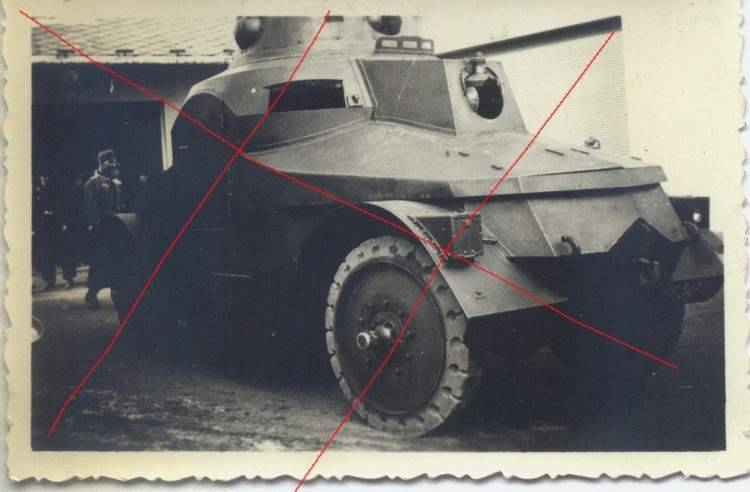
The Škoda PA-III armored car had slightly smaller dimensions and weight in comparison with previous Czechoslovak developments. Its combat weight did not exceed 6,6 tons, the length was equal to 5,35 meters, the width did not exceed 2 meters, height - 2,65 meters.
In comparison with the PA-I and PA-II armored cars, the new PA-III was lighter, but it was equipped with a less powerful engine. This led to some deterioration in mobility: on the highway, a new armored car could reach speeds of no more than 60 km / h. Power reserve remained at the same level - about 250 kilometers.
Before 1930, Škoda built the PA-III 16 armored vehicles, including one prototype. The army used the alternative designation OA vz. 27 (Obrněný automobil vzor 27 - “Protected car model 1927 of the year”). Over the next decade, new armored vehicles were actively used by the Czechoslovak military, after which they changed owners. After the partition of Czechoslovakia, three armored cars went to the Slovak army. The same number of cars was seized by Romania, and the rest of the equipment, apparently, fell into the hands of the Germans.
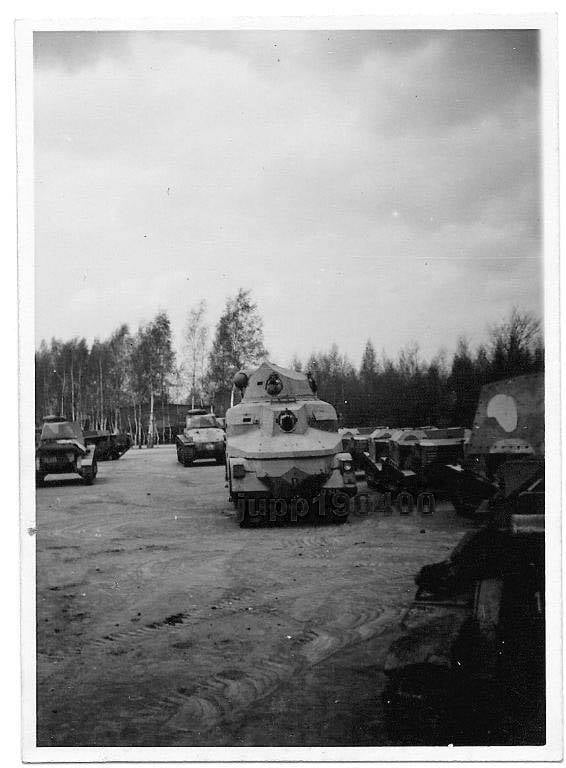
On the basis of the PA-III armored cars, the PA-IV was created, distinguished from them by some design features and weapons. No more than 10 machines of this modification had a slightly modified form of the armored hull, other wheels and an 100 horsepower engine. According to some reports, PA-IV armored cars received armor 6 mm thick. Several armored cars of the new model were equipped with an 37-mm gun mounted in the front hull sheet instead of a machine gun. In addition, the PA-IV machines were armed not only with ZB vz.26 machine guns, but also with older MG.08 guns.
In 1939, several PA-IV armored cars went to the German army. Due to insufficient performance and outdated design, these machines were used as police equipment. Some armored cars received radio stations and loop antennas. The exact fate of the built Škoda PA-IV is unknown.
Tatra OA vz.30
In the twenties, the company Tatra proposed the original architecture of the automobile chassis. Instead of the classic frame, it was proposed to use a tubular beam in which it was possible to place some transmission units. To this beam should have been attached swinging axles. This architecture of the undercarriage promised a noticeable increase in cross-country ability. One of the first cars built according to this scheme was the Tatra 26 / 30 truck. The military highly appreciated the interesting offer. Soon the Czechoslovak army wanted to get an armored car based on the chassis of the new truck. This is how the OA vz project came about. 30.
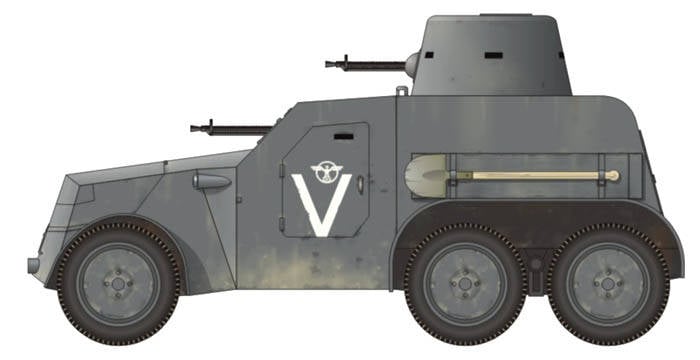
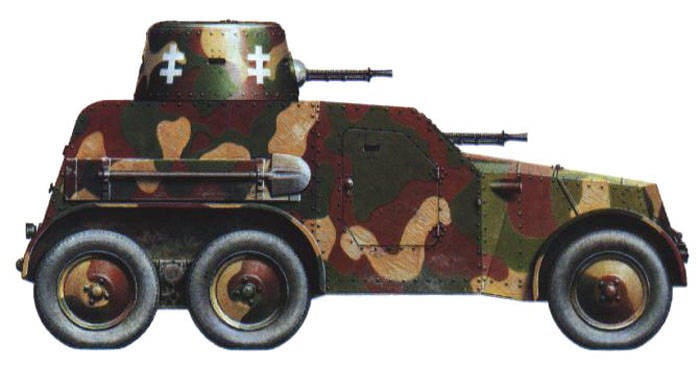
From 1927 to 1930, Tatra has built several experimental and experimental machines on which different ideas were worked out. Only in 1930, an armored car appeared that could be used by the troops. The basis for serial armored cars of the new model was the Tatra 72 truck. At the heart of the chassis of this car was a hollow beam, inside which was located the drive shaft and other transmission units. The sides of the wheels were attached to the beam on each side. All axle chassis equipped with leaf springs. With the 6 x4 wheel formula, the original chassis weighed just 780 kg, which can be considered a kind of record. The base chassis was equipped with a Tatra T52 gasoline engine with a total power of 30 hp.
The armored hull of the OA vz.30 machine was proposed to be assembled from sheets with a thickness of 5,5 mm. The panels of a relatively large size were to be mounted on the frame with bolts and rivets. The material and thickness of the armor were selected taking into account the developments of the previous Czechoslovak armored car projects. The layout of the armored hull was standard for vehicles built from commercial trucks. In front of the hull there was an armored engine hood, behind which was a large habitable volume. On the roof of the case there was a conical tower. The hull had two side doors and one aft door for boarding the car. In addition, in the roof of the tower there was an additional hatch.
Armament armored OA vz. 30 consisted of two machine guns vz.26 7,92 caliber mm. One of them was placed in the tower, the second - in the front hull sheet, to the left of the machine axis. Thus, the crew of the armored car consisted of a driver and two gunners. The possibility of installing an anti-tank gun on a new armored vehicle was considered. Analysis of the characteristics of the machine showed that it will not be able to carry such powerful weapons and the development of a new armored car is required. Despite the desire of the military, such a machine was not even designed.
According to the Czechoslovak classification of military equipment, the armored car OA vz.30 belonged to the class of light armored vehicles. Its combat weight did not exceed 2,3 tons (according to other sources, 2,5 tons). The length of the machine was equal to 4 meters, width and height - 1,57 and 2 m, respectively. With such mass and dimensions, the new armored car could accelerate on a highway to a speed of about 60 km / h. On rough terrain, the speed dropped to 10-15 km / h. The 55-liter fuel tank was enough for 200 kilometers.
The first prototype of the armored vehicle Tatra OA vz.30 was built in 1930, and soon went to the test. The military several times gave developers a list of their comments and complaints, which is why the development of the armored vehicle continued until the 1933 year. At the very beginning of the 1934, army units began to receive serial armored cars of the new model. Until the middle of 1935, Tatra built and handed over to the customer 51 an OA vz.30 armored car.
The first years of service Tatra armored vehicles OA vz.30 are not of particular interest. Fifty combat vehicles were used in combat units and took part in maneuvers several times. Peaceful life ended in 1938, when obsolete armored cars first took part in hostilities. Tatra machines were used to quell unrest in the Sudetenland. At the beginning of the next 1939, OA vz.30 armored vehicles were used in the war with Hungary. In several months of fighting, 15 machines were lost.
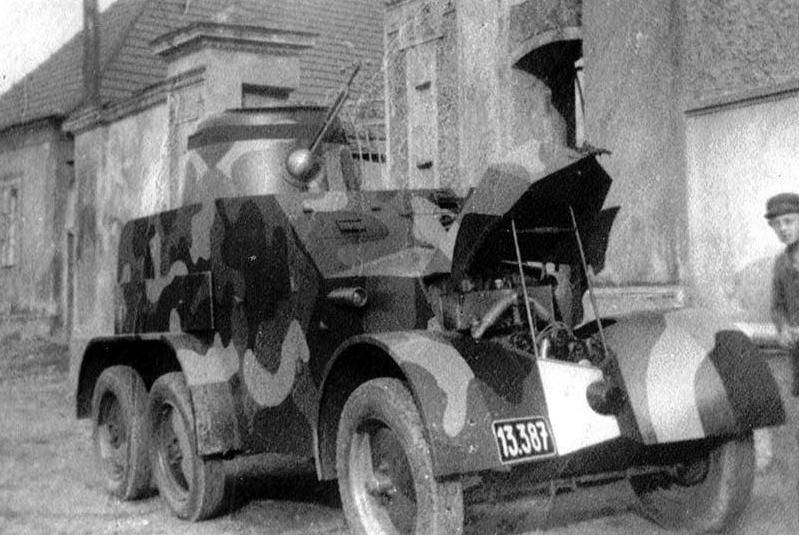
Several dozen armored cars soon got the Germans. Under the new designation PzSpr-30 / T, this technique was used in police units. There is information about the conversion of the former Czechoslovak armored cars to commander and campaign vehicles. So, in 1941, seven cars with loudspeakers were sent to the Eastern Front. Several armored vehicles OA vz.30 got into the Slovak army.
Former Czechoslovak armored vehicles were used with varying degrees of success in the fight against partisans in the occupied territories, but its characteristics were sometimes insufficient. In mid-1944, all the remaining worn armored cars OA vz.30 were sent to German tank landfills where they were used as targets.
ČKD TN SPE-34 and TN SPE-37
In 1934, ČKD received an order from the Romanian gendarmerie. Romania wanted a relatively cheap armored car, suitable for use in police purposes. Taking into account these requirements, an armored car TN SPE-34 was created.
The chassis of the Praga TN truck became the basis for the police armored car. The armored car was supposed to work only in urban conditions, therefore the chassis with the wheel formula 4х2 and the Praga engine of 85 hp. considered usable. Biaxial chassis equipped with leaf springs, single front and twin rear wheels.
The ČKD TN SPE-34 armored vehicle body had an interesting design. The 4 mm thick armor plates covered only the engine and the fighting compartment. The aft part of the hull was made of ordinary metal. The armored "box" of the combat compartment ended behind the tower, and the oblique hull feed had no protection. Apparently, such a design of armored units was chosen to facilitate the design. In the front plate and the sides of the hood there were louvers for cooling the engine and hatches for its maintenance. In the front hull sheet provided hatches for monitoring the road, in the sides - the door. On the roof of the fighting compartment there was a conical tower with a flat frontal sheet. The tower was going from sheets of thickness 8 mm.
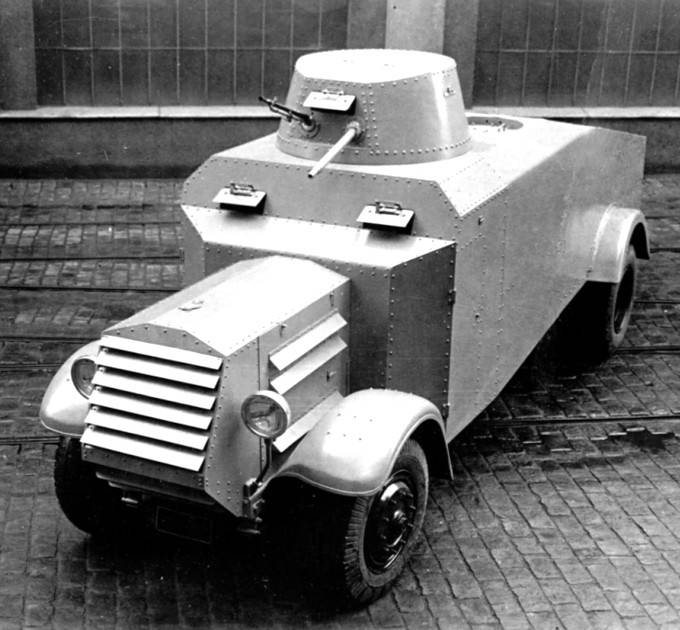
The armament of the TN SPE-34 armored vehicle consisted of one vz.26 machine gun with 1000 ammunition ammunition. If necessary, the police could use 100 smoke grenades, laid in the fighting compartment. The crew of a police armored car for Romania consisted of three people.
The new armored car, despite the original design of the armored hull, turned out to be quite heavy - its combat weight reached 12 tons. The total length of the vehicle was 7,99 m, the width was 2,2 m, height - 2,65 m. Having a relatively powerful engine, the ČKD TN SPE-34 armored car on the highway could reach speeds of up to 40 km / h and travel up to 200 kilometers per fuel station. For participation in police operations in urban environments, such characteristics were considered sufficient.
The Romanian gendarmerie was extremely limited in funds, because of which it was immediately able to acquire only three armored vehicles of the new model. A little later, in 1937, the construction of new Czechoslovak armored cars, representing a modernized version of the TN SPE-34, began on Romania’s order. The ČKD TN SPE-37 armored car differed from the base car only by a new engine of slightly more power and design of the armored hull. The sides of the new armored car were made of two panels placed at an angle to each other. The characteristics of the two armored vehicles were almost identical, but the TN SPE-37 could accelerate on the highway to 50 km / h. In 1937, the first prototype of the new armored car was built, and a little later, ČKD assembled and handed over four production vehicles to the customer.
The seven ČKD TN SPE-34 and TN SPE-37 armored vehicles were used to quell the unrest before the start of World War II. Exact information about the future of this technology is not available, however, it is known that the latest armored cars of the Romanian gendarmerie, built in Czechoslovakia, were written off and disposed of only in the late forties.
***
At the end of 1934, the Czechoslovak military made an important decision. After analyzing the state and prospects of armored vehicles, they concluded that there was no need for further construction of combat vehicles with wheeled chassis. Being easier to manufacture and maintain, the wheel propulsion was inferior to the caterpillar in cross-country terrain and other important characteristics. Following the analysis, it was decided to stop all work on the creation of new wheeled armored vehicles. All armored vehicles of the near future should have a tracked chassis. The last large-scale armored car of Czechoslovakia, which appeared in the interwar period, was Tatra OA vz.30. He also owns a record in the total number of built cars - the army received an 51 armored car of this type.
On the materials of the sites:
http://forum.valka.cz/
http://aviarmor.net/
http://zonwar.ru/
http://shushpanzer-ru.livejournal.com/
http://strangernn.livejournal.com/
http://tanksinworldwar2.com/
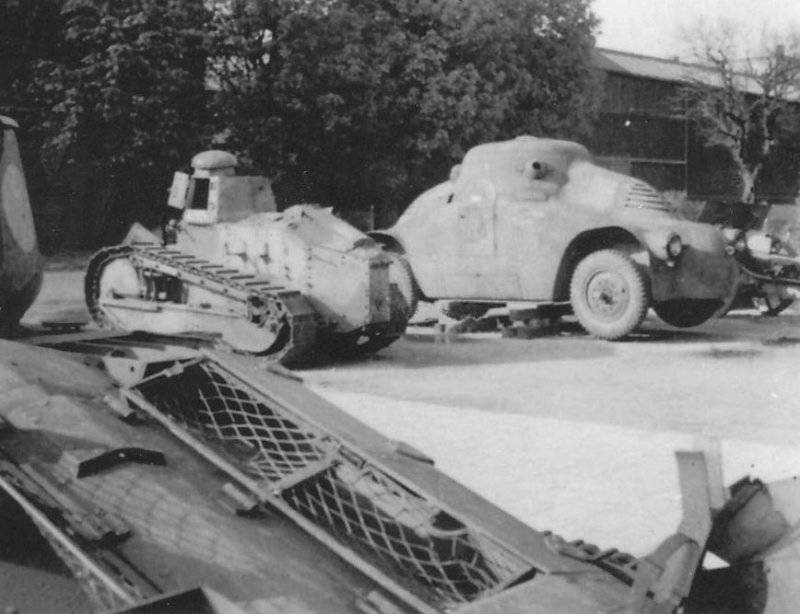
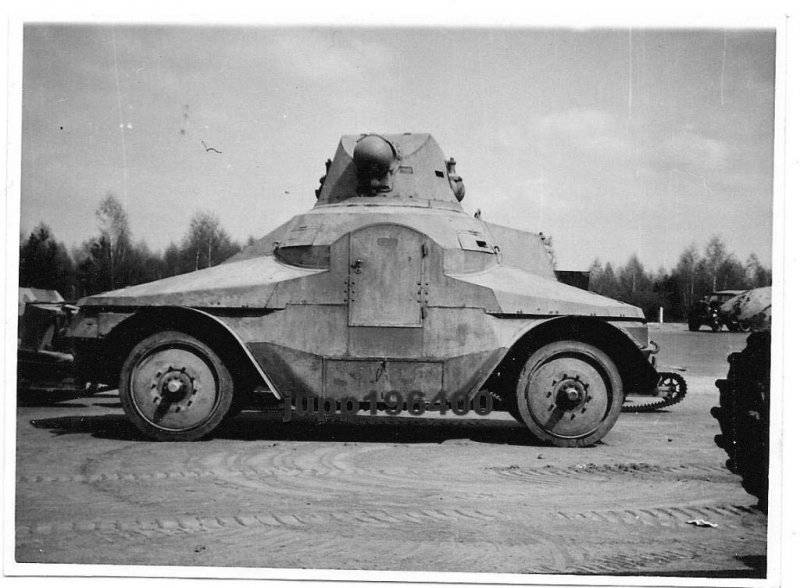
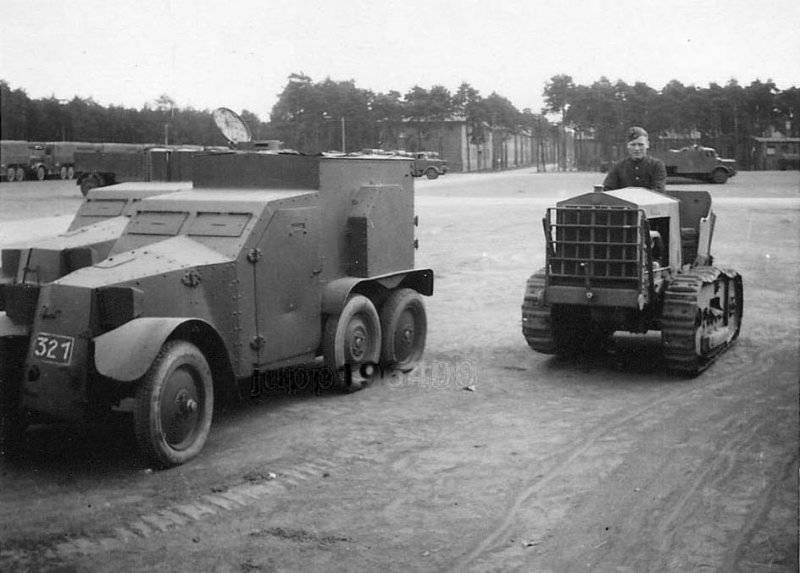
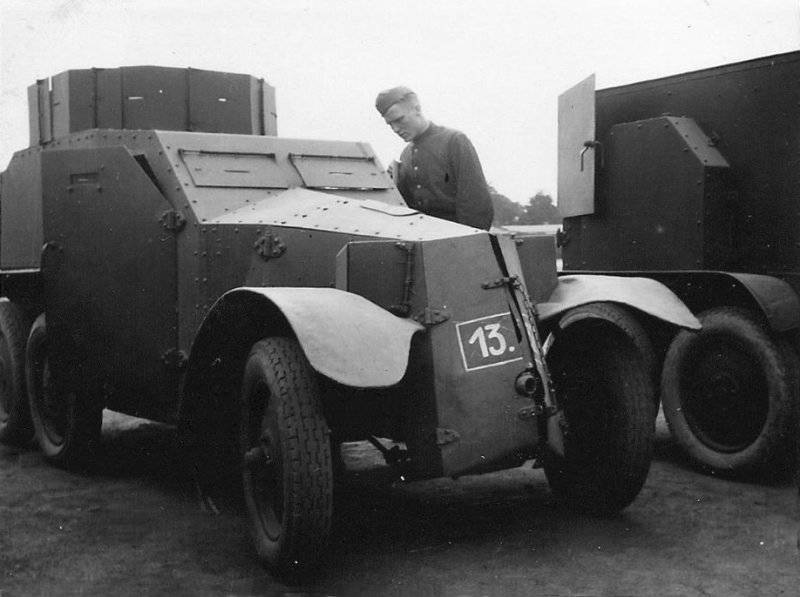
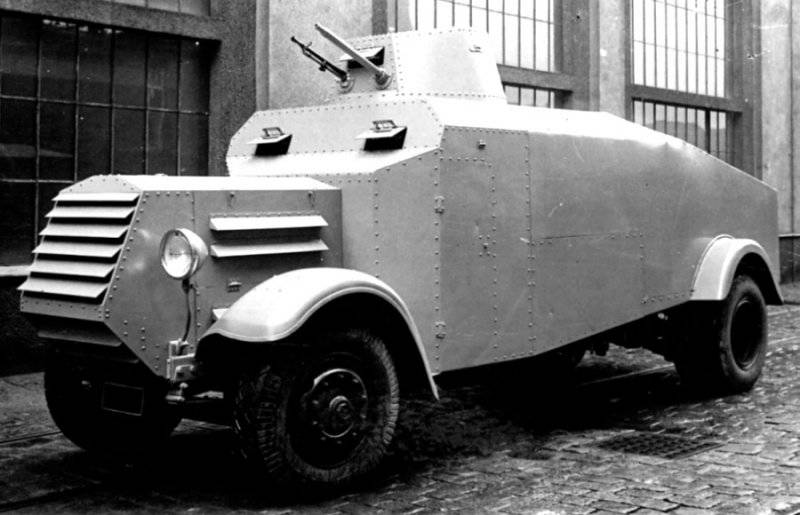
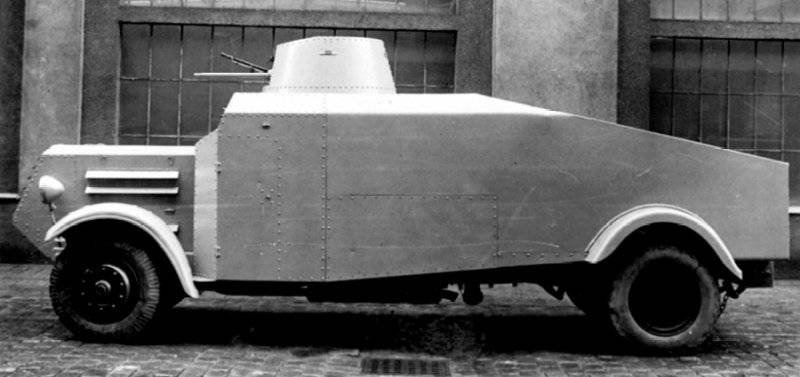
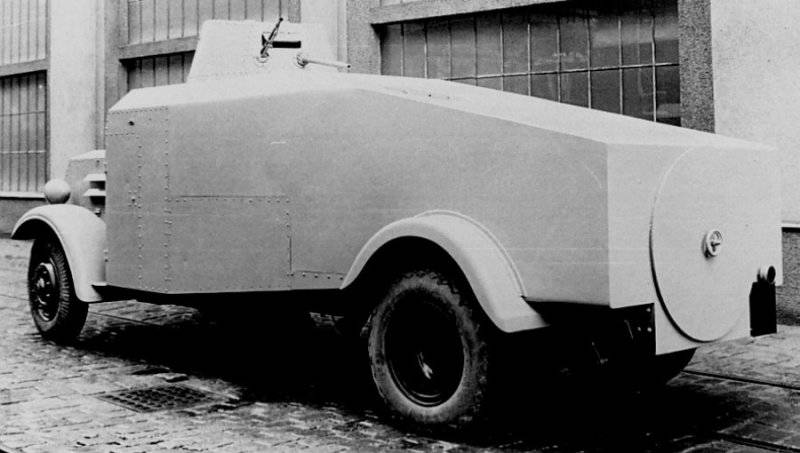
Information